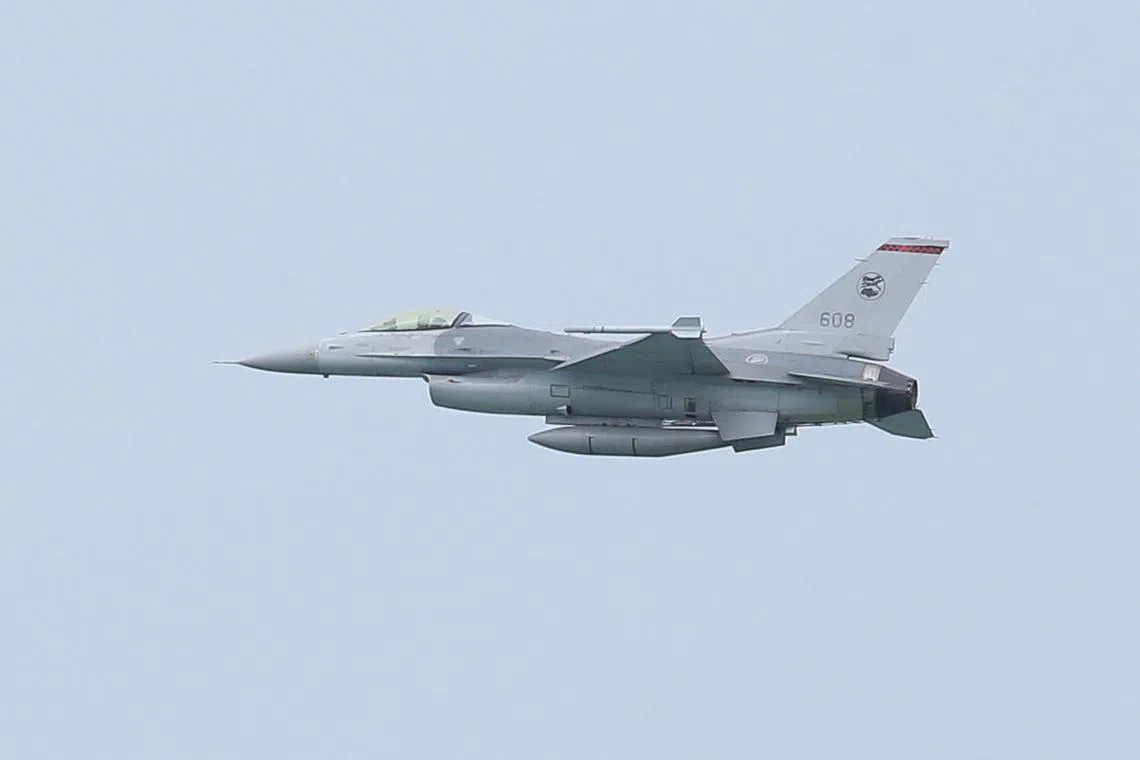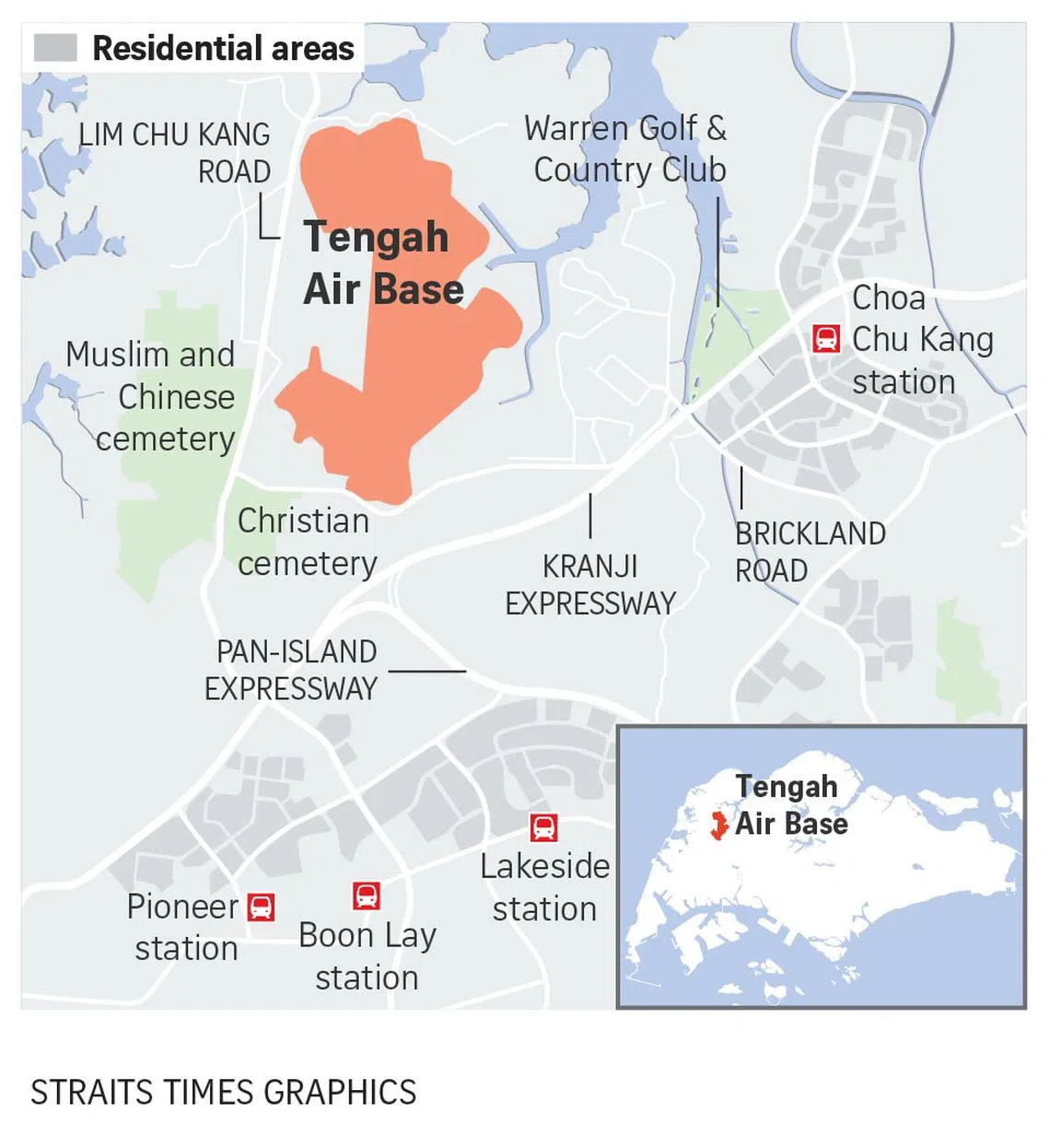RSAF F-16 crash: Data from flight recorder under review; training for fleet to remain suspended
Sign up now: Get ST's newsletters delivered to your inbox

The F-16 is one of the world’s most-widely used modern fighter jets and is currently flown by 25 air forces around the world.
ST PHOTO: ONG WEE JIN
Follow topic:
The Republic of Singapore Air Force (RSAF) will continue to suspend training flights for its F-16 fleet following the crash of one of its aircraft on May 8.
The Ministry of Defence (Mindef) said in a statement on May 9 that the suspension will remain until its investigations show that it is safe to resume F-16 training flights.
The RSAF also took a one-day safety time-out following the crash, for its units to review safety practices and contingency procedures, and will resume flight training on May 10 except for the F-16s.
Mindef also said the aircraft’s flight data recorder has been recovered, and that the RSAF is working closely with F-16 manufacturer Lockheed Martin to review the recorded data. Singapore’s Transport Safety Investigation Bureau, which is part of the Ministry of Transport, will also be supporting the investigation.
The F-16C single-seat fighter jet had crashed inside Tengah Air Base
Mr Greg Waldron, the Singapore-based Asia managing editor of aviation publication FlightGlobal, told The Straits Times that the F-16 is a complex aircraft, and it would take a full investigation looking at a large amount of data to determine what exactly had happened.
“The flight controls can refer to a number of things, such as the aircraft’s fly-by-wire control system, or perhaps control surfaces such as flaps, ailerons or rudders,” he added.
The crash was the fourth involving an RSAF F-16 since they entered service in the late 1980s. The F-16 is one of the world’s most widely used modern fighter jets and is currently flown by 25 air forces around the world.
Lockheed Martin has built more than 4,600 F-16s since 1976, and its production line in the United States is currently still building jets for customers such as Slovakia and Taiwan.
Emergency procedures
Mindef said in its statement that the pilot responded in accordance with emergency procedures when he encountered issues before ejecting from the aircraft. He was taken to hospital for a full medical examination, which revealed no major injuries.
In the wake of the crash landing by an RSAF AH-64D Apache helicopter in a field in Woodlands in September 2010, Mr Teo Chee Hean, who was defence minister at the time, told Parliament that in the event of an inflight emergency, the key priority for RSAF pilots is always to avoid populated areas.
They will attempt to fly the helicopter back to the nearest airbase where possible, and if not, land it in the nearest open space, he said, adding that pilots are briefed on potential emergency landing sites on their flight routes before they take to the air.
“Our pilots are trained to ensure the safety of the public before making a decision to land in any of these open spaces, and they will forgo such a landing even at risk to themselves if there is a danger to the population,” Mr Teo had said.
A former RSAF pilot who spoke to ST confirmed that the safety of people on the ground was their primary concern in an inflight emergency.
He said pilots were briefed on the populated areas in their flight paths before every mission, and were trained to point their aircraft away from populated areas before evacuating the aircraft if they could not land at the nearest airbase.
This was due to the aircraft needing a runway to land and hence, unlike helicopters, putting down on an open field in the event of an emergency was not an option.



